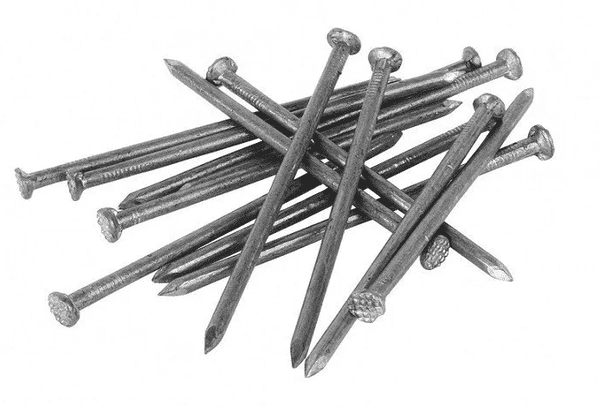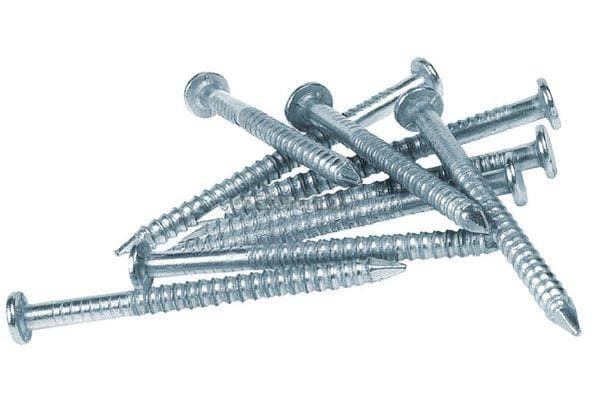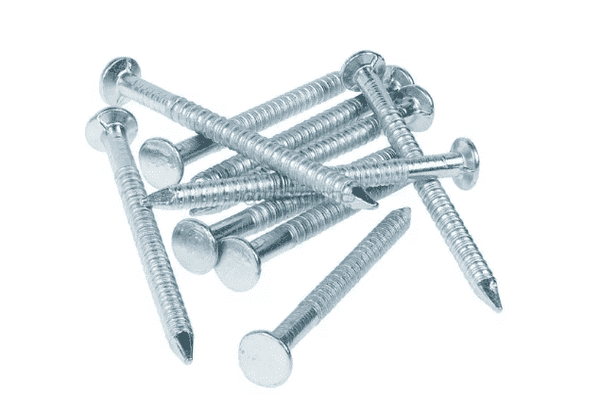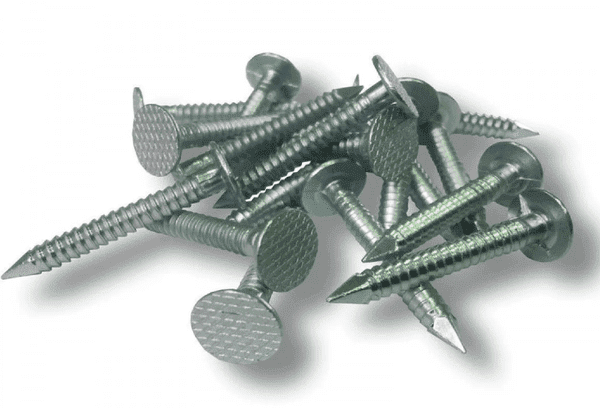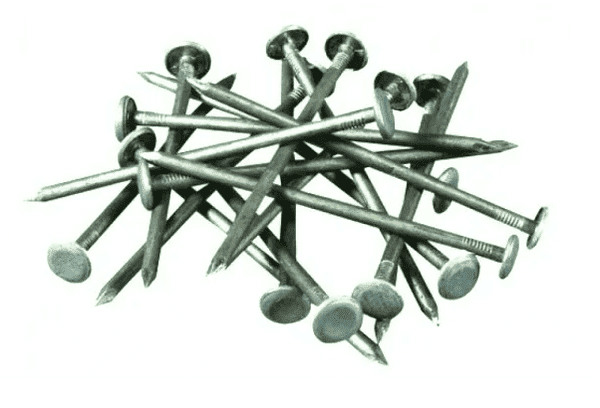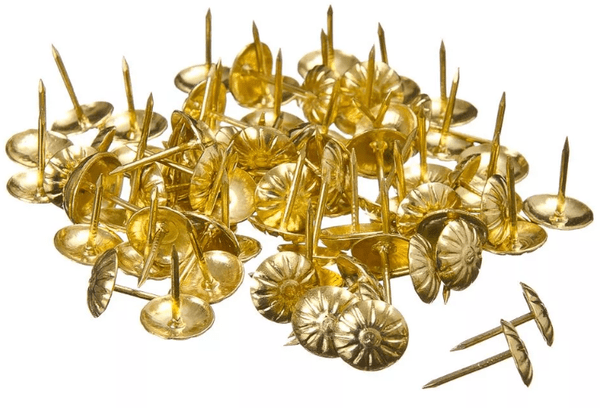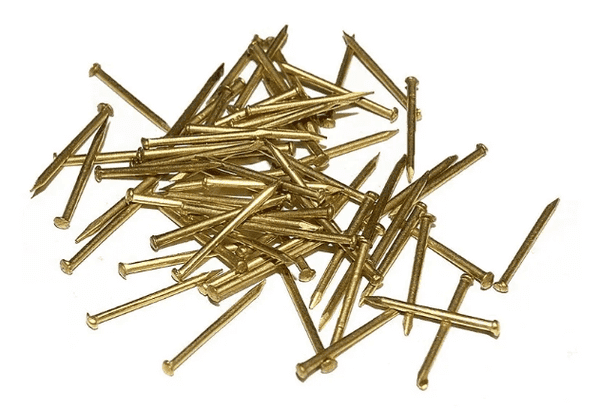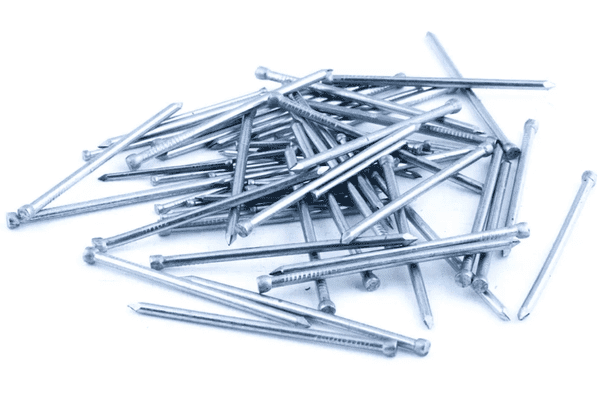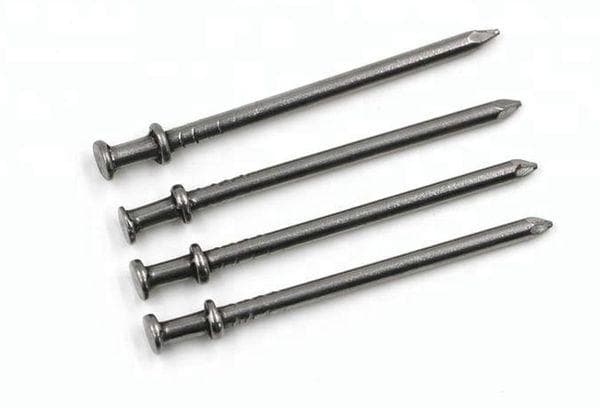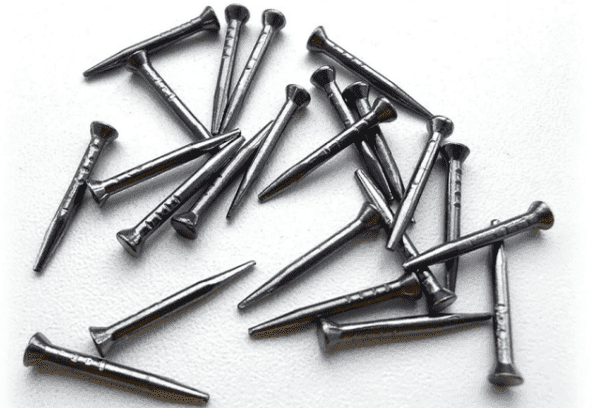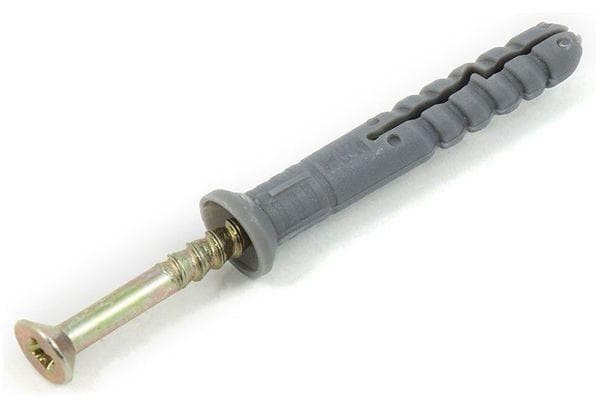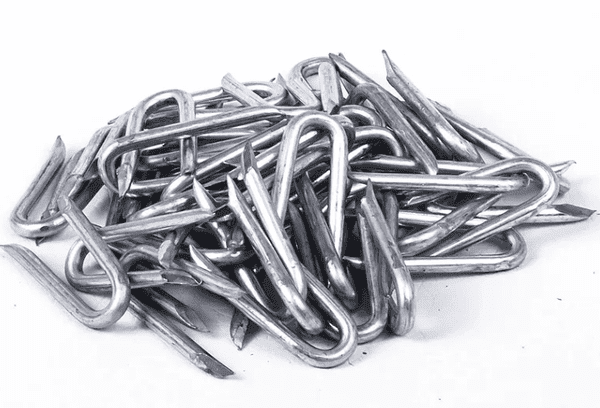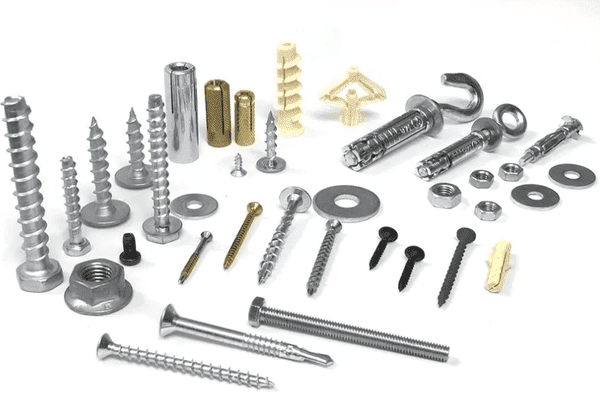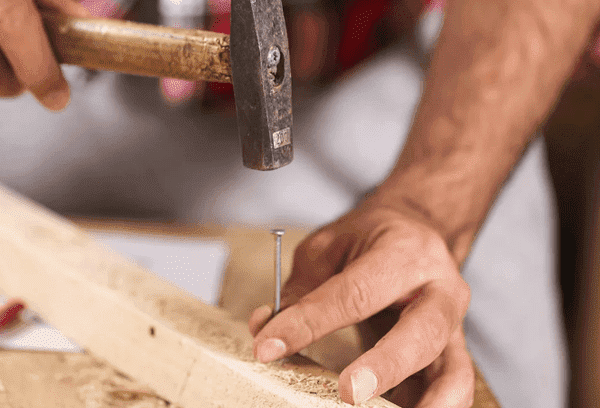Types of nails - what to buy and why, so as not to waste money
Content:
It is difficult to imagine building a house or renovating without the use of fasteners. The variety of types of nails can make choosing difficult even for an experienced builder. Therefore, who decided to carry out the work independently, what fastening element is needed to connect materials, how to hammer it in correctly and how long such a connection of parts will last.
What materials are hardware made from?
Nails are divided according to purpose, length, diameter and conditions of use, and are also made from different alloys. One material prevents corrosion, which means it can be used outdoors, another will firmly connect wooden parts, and the third will have a beautiful cap that will not disturb the beautiful design of the room.
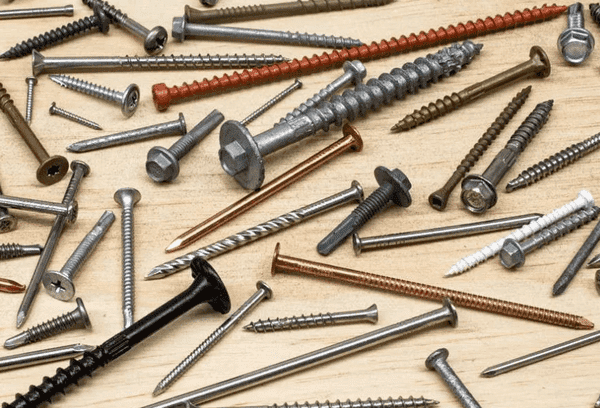
What are fasteners made of and where are they used:
- Black steel. They are used for fastening wooden elements of temporary structures and indoors.Metal without corrosion protection, when used outdoors, quickly becomes covered with rust, smudges form on the surface, and the nail is destroyed relatively quickly.
- Cink Steel. The cost of such products is a little more expensive, but they are not subject to corrosion and are designed for any type of work, regardless of the conditions of use. When fastening with galvanized hardware, you need to take into account that low-quality products, when exposed to moisture, can also begin to rust.
- Steel coated with brass or copper. Involves the use of nails in the most difficult conditions or for decorative purposes. The coating completely protects the metal from corrosion and oxidation, so the service life of such products is unlimited. Brass and copper also have a similar shade to wood, which allows them to be used when covering surfaces with clapboards.
- Aluminum. Rarely used outdoors, but more often indoors. When exposed to moisture, the nail quickly becomes coated with oxide, which gives the head an unsightly appearance. But when oxidation occurs, the metal is no longer afraid of anything and such fasteners can last for many years.
When choosing fasteners, experts recommend purchasing nails not according to price, but according to the conditions of use. Coating with zinc, brass and copper costs a little more, but eliminates the appearance of rust, which destroys not only the metal, but also the material with which it comes into contact.
Qualification of nails by purpose
For almost every type of work, there is a certain type of fastener that guarantees optimal connection of parts. They differ in the size of the head and the type of nail shaft, which can be smooth, rough or screw.The choice of hardware depends on the load on the joint and its fastening capabilities.
Ordinary construction
The most common type of fastener, which is used in all types of work where it is necessary to connect structures made of hard and oily wood or secure material to it. It is usually made of galvanized steel and sold in stores by weight in kilograms.
The nail head has notches that prevent the hammer from sliding when hammering, and there are small rings near it, which increases the friction force with the fastening materials.
Screw
It has a smooth cap and a pointed shaft, twisted along its entire length. Hardware is made from galvanized square wire and is used when fastening materials in places of high humidity. These are elements of the roof truss structure, where natural expansion and drying of wooden materials is expected. Also, a screw nail is used when laying floors and knocking together containers from boards.
Thanks to this shape, the hardware does not stretch under load and creates a strong fastening. The screw element is difficult to dismantle, and it will not be possible to remove it from the structure without destruction.
Ruff
The rod along its entire length is periodic, which, when entering the material, is firmly fixed in it. When hammered, the nail has a very strong connection with the material, which is five times stronger than ordinary smooth hardware in terms of fastening force. Such products are used in places where there is a weight load and the possibility of shifting wooden parts.
This type of nail drives with force, which is why it is often used in conjunction with air guns.If the proper equipment is not available, then a hole of a smaller diameter is first drilled at the attachment point, and then a nail is driven in with a hammer. It is impossible to remove such hardware, so when fixing materials you need to accurately calculate the location of the attachment.
Roofing
Designed for fastening roofing felt and corrugated sheets to the roof truss structure. The nail has a large head with a corrugated or smooth surface, which eliminates deformation and tearing of the material from the fastener, and a short length. Typically, this type of hardware is coated with a thick layer of galvanization, which prevents the formation of rust, which leaves unsightly stains on the coating and leads to the destruction of wooden structures.
Slate
Specially designed for attaching this material to the roof. The nail has a smooth shaft and a large rounded head, which prevents precipitation from entering the punched hole. In addition to hardware, washers made of rubber or polymer materials are used, which improves the sealing of the connection. Slate nails are driven only into the upper crest of the wave, which eliminates roof leaks.
Wallpaper or furniture
Used for fastening upholstery materials to frames where there is no strong breaking load. The nail has a short length, a thin shaft and a large decorative head, often embossed on the surface, which improves the appearance of the joints. The fastener is usually made of copper, brass or aluminum.
Finishing
It is used for fastening wooden decorative elements - these are skirting boards, door and window frames, as well as lining when covering rooms. The design of the nail differs significantly from conventional hardware.It has practically no head, but only a slight thickening for driving.
Such a nail completely penetrates the material without violating its integrity. The absence of a cap creates an invisible fastener, which gives an aesthetic appearance and a feeling of integrity of the surface of the decorative element.
With oval head
It is used when covering surfaces with clapboards made of soft wood. The oval shape easily fits into the attachment point, does not destroy the structure of the material, and eliminates cracking and deformation. The nail can be made of galvanized steel or aluminum, copper or brass.
Double cap
Used for the installation of temporary scaffolding structures and formwork on construction sites. The caps are located at a distance from each other, which allows for quick dismantling without destroying the wooden boards. Also, such hardware is used for installing film on greenhouses, and when it becomes necessary to remove it, the fastening can be easily removed without visible defects in the material and design.
Shoe
A special fastening element for fixing the heel and sole. The nail usually has a square cross-section, a short shaft length and a relatively large head. This shape ensures reliable fastening and prevents the hardware from falling out when walking. Shoe studs are made of metal and coated with galvanization, copper and brass.
Dowel nail
Used for fastening metal and wood to concrete, brick and stone bases. To drive such a nail, a pneumatic gun is used; it is impossible to fasten it manually.
The hardware is made in the form of a smooth or corrugated rod with a large head, on which there is a centering washer, which ensures that the nail enters at the desired angle. As well as a spacer element, which ensures maximum contact between materials.
Nail staple
The U-shape with two pointed ends is designed for fastening nets and cables. To drive in hardware, it is enough to install it in the fastening location and hit it with a hammer; the loop formed by the hardware will firmly fix the wire or mesh material and prevent its movement.
There are also nails for highly specialized purposes - glass and lock, barge and ship. To choose the right hardware, you need to base it on the base and coating material, then it’s difficult to make a mistake with the purpose.
Nail sizes
To choose the correct length and diameter of the hardware, you need to know the thickness of the fastening materials. The optimal ratio is when the nail enters 2/3 of the main structure. If its length is longer, then there is a possibility of injury due to the sharp end extending beyond the material. In this case, the nail on the other side of the fastener is bent and driven into the base.
But it is better to choose hardware that matches the required size. Stores sell construction nails with a length of 16-310 mm and a diameter of 1.2-8.8 mm.
How to choose the right hardware for fixing wooden elements:
- to avoid tearing off and destruction of the structure, the minimum length of the nail must exceed the thickness of the board by three times and enter 2/3 into the base;
- To achieve maximum shear strength, the length of the hardware should be six times its diameter.
To fasten sheet materials, nails with large heads and a thin rod are used, which makes it possible to fix the finish without destroying its integrity. In this case, the length of the hardware should be three to four times the thickness of the sheet. To prevent the cap from protruding beyond the limits of the material, builders drill a small hole that corresponds to the diameter of the cap, then the attachment point can be hidden with putty.
Methods for driving nails into material
When performing work on a large scale, it is better to use pneumatic equipment - this will save effort and time. For mounting guns, nails are packaged in special cassettes that are inserted into a drum. Pneumatic equipment shoots hardware under pressure and fixes it in the right place. When using a gun, you must strictly follow safety precautions to avoid injuries and accidents.
If the work is carried out with a hammer, then you need to follow one rule: the larger the nail, the heavier the hammer must be in order to drive the fastener with several blows to the head.
In construction stores you can purchase four types of tools for working with this type of hardware. Handle length 25-37 cm and weight 0.25-1.0 kg. A hammer with a handle length of 30-32 cm and a weight of 0.5 kg is considered a multi-purpose tool. It can work with any size of fasteners, with the only exception being small hardware used in shoe repair and furniture upholstery.
Useful tips for hammering nails
Many novice builders believe that a few blows with a hammer are enough to fix one material to another.But even with such simple work, mistakes can be made that will lead to loss of strength of the entire structure or loosening of the hardware at the fastening point.
Basic rules for hammering nails:
- You need to start hammering with movement without much effort, and after making sure that the hardware goes into the right place, finish fixing it with two or three blows. It is worth remembering: the less hammer action is performed when installing a nail, the stronger it will hold in the material.
- The connection of wooden parts will be stronger if you drive two hardware at the fastening point at different angles. When the board is dry, you can lubricate the tip with oil or soap, this will make it easier to penetrate the wood without damaging the fibers, and to prevent the board from cracking, you can blunt the tip a little.
- When using long products, to avoid bending, you can hold the nail at the head with pliers. This will reduce the likelihood of injury and make work easier.
- Before driving a fastener into soft materials such as drywall, it is recommended that you first drill a hole slightly smaller in diameter than the stud.
- If you are fastening sheets of plywood or MDF panels that are difficult to pierce with one blow, it is recommended to first make a small indentation with an awl.
- To create fasteners on walls covered with wallpaper, it is better to make a small cut at the place where the nail is installed, then the canvas will remain intact.
- In hard-to-reach places, to drive in hardware, you need to equip yourself with a metal core that is installed on the head. Then you can hammer a nail into the recess.
- To avoid hitting your fingers, you can make a small cut in a piece of lath, and install the hardware into it and hammer it.
When making a purchase in a store, pay attention to the quality of the nail coating. If there is the slightest sign of corrosion, it is better to refuse the purchase; such products will quickly rust, which will reduce their service life by half.
Choosing the right hardware for its intended purpose is not difficult, the main thing is to know the required length and diameter. This is easily calculated based on the thickness of the materials being fastened. And every novice builder can learn how to hammer nails correctly.
